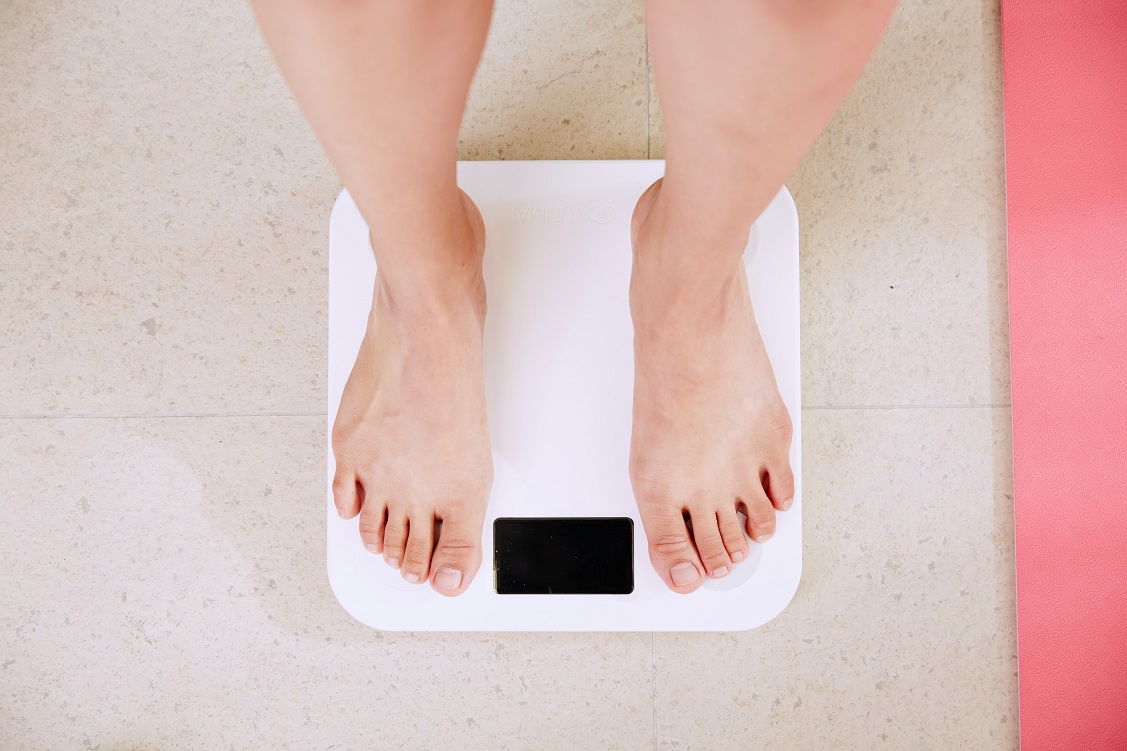Use A Small Scale To Lose Weight

The sure fire method to lose weight is reducing calorie intake. The scale proves it true every time.
But you know this already. It’s nothing new. The issue is that it’s not as easy as it sounds. To address the difficulty we’ve come up with countless ways to reduce our food intake: meal prepping, using smaller to go containers, buying off the fit menu, etc. It’s an endless painful struggle of eating less and checking the scale to see if it worked.
But it doesn’t need to be this way. Weight loss doesn’t need to be a terrible relationship with the scale.
For example, athletes manipulate their weight with ease all the time: wrestlers, boxers, body-builders, sumo-wrestlers, etc. Changing their weight is commonplace. In fact, it’s a requirement for their sport. When they step on the scale, it’s not a question of whether they lost or gained weight but by how much.
How do they do it?
The answer is they’ve spent time with food. They have studied how to use food as medicine, as a means to an end. They are educated on what food contains and how much they need to eat. In short, they count their calories, but it’s not the kind of counting that requires meticulous measuring and weighing before every meal. No, that would drive any person insane. Instead, they estimate their food intake at each meal and ensure it fits certain parameters. These parameters keeps their intake in check, almost guaranteeing success. I say almost because they need one critical skill to make it work that I’ll discuss below.
Table of Contents
Is Counting Calories Practical?
Calorie counting is a widely known method of controlling food intake, but the methods used to do it effectively are not. Looking at calorie counting objectively we know it works, but from a practical standpoint many deem it too time consuming and tedious to fit into a normal lifestyle. This is where counting calories gets a bad wrap and is not properly understood.
Hard Way: The hard way is to count calories is tracking everything with exact precision. This is unnecessary. We aren’t in a lab. This isn’t a research study. The foods we eat change daily. Don’t fall into the trap that calorie counting is impossible. There is an easy way.
Easy Way: The easy way is to keep a rough running tally. At each meal estimate how many calories are in the meal and write it down. To determine the number of calories you should eat at the last meal of the day (dinner), use the following formula:
Daily Caloric Goal – Calories Eaten = Remaining Calorie Target for Dinner
This method takes 30 seconds per meal to implement. That’s not a lot of time for results. However, there is one piece to this puzzle still missing take enables you to implement this method quickly and that is the skill I mentioned above. The skill required is mastering the ability to accurately estimate the calories in food. This is an invaluable skill that makes calorie counting quick and easy, and I’m going to divulge exactly how to develop it.
Developing the Skill: Calorie Counting
For two weeks, pick 1 meal a day to weigh on a food scale. A bathroom scale will not provide the accuracy needed to do this. Our objective is to learn how many calories are in each portion of food using the weight of that food. Going through this process of weighing food will reveal an accurate picture of the calories in food. Continuing this process for 2 weeks will strength your ability to accurately estimate the foods you eat most often.
To properly practice this method, weigh each food individually and raw. Look at how many grams that portion weighs and compare it to the nutrition facts online. Nutrition label usually have two forms of measurements including volume and weight. Use the weight in grams to determine how many calories are in the portion weighed. Continue this process for each ingredient in your meal.
At the end you will be able to add up all the calories and make sure the meal fits within the calorie goal. Remember this process is about developing a better grasp of the calorie content in food, not weighing every meal for life. However, you should brush up now and then. It keeps you sharp.
Note: Some foods like grains or nut butters should be comparatively measured in a measuring cup or utensil and weighed. When you measure both ways, you’ll discover how to accurately use measuring cups and utensils. Also, don’t forget to try weighing oils. The difference between 80 and 140 calories is an easy mistake to make with a tablespoon.
The Aftermath
Once you’ve mastered the skill of estimating calories on the go, staying within your caloric goals will become second nature. The skill of estimating calories is worth its weight in gold, but it does require effort to learn. You need to practice or your goal of 1700 calories could end up to be 2200 calories with inaccurate estimates. In the long-term this method will help you maintain your weight and empower you to change it at will. This is how you use the scale to change your weight.
Want to lose weight using proven nutritional strategies? Check out our Nutrition Coaching.
